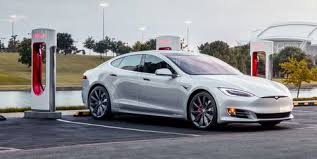by David Booth* It wasn’t a banner year for electric vehicles in 2019. After a six-year run typified by near exponential growth — EVs averaged an incredible 60 per cent year-over-year increase from 2012 to 2018 — worldwide sales of plug-in vehicles have stagnated
It wasn’t a banner year for electric vehicles in 2019. After a six-year run typified by near exponential growth — EVs averaged an incredible 60 per cent year-over-year increase from 2012 to 2018 — worldwide sales of plug-in vehicles have stagnated. Oh, pretty much any other segment in the auto business would have gladly welcomed 2019’s five per cent increase in new PHEV and BEV registrations. But the predictions that foresee electrification supplanting internal combustion by 2040 — or even 2030 — have all been predicated on sales maintaining that phenomenal growth. Every year, year after year.
Indeed, on a worldwide basis, EV sales seem to have leveled off. According to Automotive World, 2.259 million new BEVs and PHEVs were registered last year. That’s roughly 2.5 percent of the 90 million-plus vehicles sold last year. For the record, constant five per cent annual sales increases would see the EV market share reach about four per cent of the worldwide light vehicle market by 2030, and just under seven per cent by 2040. Again, not exactly the worldwide dominance that has, until now, been assumed fait already accompli.
Sure, there have been pockets of continued growth. Europe has continued to be a hot bed of electrification. Norway, the poster country for electric vehicle adoption, still shines. Indeed, were it not for Europe’s uncharacteristic 47 per cent growth — significantly larger than the two previous years’ increases, by the way — worldwide sales of EVs would actually have been significantly worse, perhaps even in the red. China and the United States, the two largest automotive markets in the world, actually recorded decreases in plug-in sales. Yes, sales of BEVs — and where were the splashy headlines announcing this latest trend — were down four per cent in China and a whopping nine per cent for the latter.
As for the why, as in all things, it’s simply a case of following the money. In the United States, the major factor was the price of gas, making the overall cost of ownership of a gas-guzzling pickup even more affordable, while the long-promised reduction in electric vehicle MSRPs — the constant refrain that EVs will soon be cost-competitive with ICE-powered cars — is still very much a future pipe dream.
Initially, China’s drop is more surprising, the People’s Republic often touted as a leader in electric vehicle development and adoption. But as Motor Mouth has reported, the Chinese love-in with all cars battery powered seems to have waned somewhat, and the world’s largest automotive market is looking to hydrogen fuel cell-powered vehicles as competition to the BEV. So, in June of last year, the subsidies for EV purchases were cut in half.
As for the smokescreen in the never-ending why-aren’t-EVs-more-popular debate — a lack of a charging infrastructure to support electric vehicle owners — China’s decrease puts paid to that notion. To be sure, America’s spotty chain of charging stations — except for Tesla’s impressive Supercharger network — is a roadblock to widespread adoption. But China has half a million charging points, more than enough to support its four million or so EVs. Subsidy, in fact, trumps infrastructure.
Nothing illustrates the dominance of incentives in the purchase decision more than Norway’s incredible success in promoting electric vehicles. In 2019, EVs accounted for a whopping 56 per cent of the new vehicles sold in the Scandinavian petroleum producer. Plug-in proponents like to ascribe this popularity to its comprehensive charging network and a particular Norwegian concern for the environment.
What’s really fueling the revolution is the most generous incentivization in the world. Norway’s various taxes — sales, road and fuel — have long been onerous, so much so that, according to Green Car Reports, taxes amounting 63 per cent — yes, US$13,510 — are added to the on-the-road cost of a US$21,500 Volkswagen Golf. An e-Golf, meanwhile, is completely exempt from those same taxes. Do the math and the plug-in version of German compact is roughly US$4,500 cheaper than the ICE version — $35,010 for the regular Golf versus $30,590 for the electric version. And with Tesla Model 3s barely more expensive than a gas-powered Golf, the question we should perhaps be asking is not why electrified vehicles are so popular in Norway, but rather why anyone bothers buying a conventional car when the government is giving EVs away.
That price advantage is a complete reversal of reality where, despite protagonists claiming EVs are about to be cost equivalent, the gap in pricing favouring ICEs is still substantial. A Kia Soul EV, for instance, retails for $42,595 in Canada, while the base gas-powered version costs $21,195. Even with the most generous subsidies, the price premium is still substantial. Go through the entire list of electric vehicles sold in Canada and none are price competitive with their gas-fueled twins — or nearest equivalent — with or without subsidies. And that is, I might add, with virtually all automakers minimizing the profit they seek from their EV offerings compared with their gasoline counterparts.
And our subsidies do matter, even if they are not as generous as Norway’s. Compared with the U.S., Canada is still EV friendly, our BEV and PHEV market growing some 26 per cent in 2019. That growth, however, is extremely localized and seemingly based solely on government largesse. In British Columbia and Quebec, whose local governments ladle on their own incentives on top of the federal $5,000 subsidy, EV sales are booming. In Ontario, which famously ended its incentivization in 2018, sales have dropped precipitously. Indeed, it appears the federal incentive alone is too little to have significant effect. For instance, on October 13, 2019, Charlottetown’s The Guardian reported Transport Canada had received 25,616 requests for EV incentives. However, only 128 of those were from the Atlantic provinces. That’s barely 0.5 per cent, even though the four provinces account for about 6.5 per cent of Canada’s population. And, says The Guardian, that’s despite the "many charging stations in the region installed using public funds.” Like I said, subsidies sell EVs, not infrastructure.
Now, except for Norway, which is simply exporting its tailpipe emissions rather than reducing them — the country’s subsidization is paid for by its huge oil wealth fund — no country can afford to maintain these outlays until battery-powered vehicles become affordable, in fact they ever do. So, if we are to transform our fleets to electrification, we’re going to need a longer-term plan. The first step might be the end of this internecine fight between electrification protagonists. Fuel cells are not "fool’s cells” as long as they reduce tailpipe emissions. Plug-in hybrids are not lesser just because they only reduce CO2 emissions by 50 or so per cent. Practicality must be more important than purity. Infighting doesn’t work any better in a technological revolution than it does in political circles. The goal is the reduction of greenhouses gases. How we get there doesn’t matter.
Incentives cannot and will not last forever. If a five per cent bump in sales is all we can manage when we’re throwing money at EVs, imagine what will happen when they’re not around. We need a better solution.
*Senior Writer/Postmedia Driving
(driving.ca)




